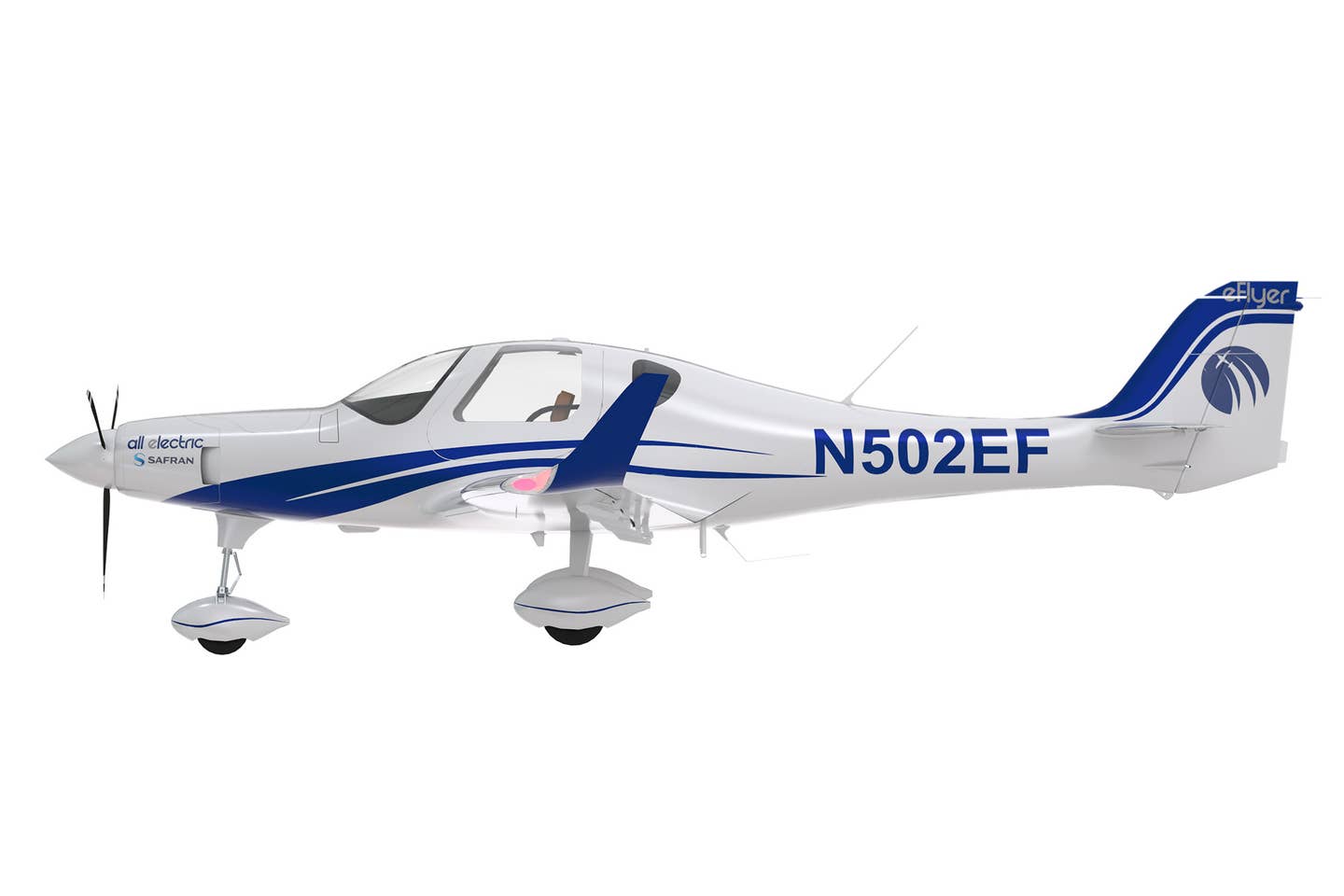
The testing of the whole-aircraft parachute recovery system on eFlyer 2 has begun. Bye Aerospace
At a deserted drop test range outside Henderson, Nevada, in late February 2021, Aviation Safety Resources, Inc. (ASR), successfully completed the first developmental test of its whole-aircraft parachute recovery system for Bye Aerospace’s eFlyer 2, the first in the company’s eFlyer family of FAA Part 23-certified all-electric aircraft.
“This was the first in a series of tests to qualify the eFlyer 2 parachute system to ASTM standards and make sure the canopy will withstand the load put on it,” said Larry Williams, ASR’s president and CEO. “Everything was perfect, and so far we are getting the results we expected. The next series will advance to ultimate load testing where we will drop 1.15 times the maximum weight and speed for eFlyer 2. This testing represents a real-world environment to make sure the system provides maximum safety and demonstrates the parachute canopy is robust. By exceeding the rated weights and speeds, this provides a critical 1.5X safety factor in accordance with the ASTM and FAA requirements.”
Bye Aerospace also said the Colorado-based company will use the progress on their eFlyer certification program to further develop a yet-unannounced larger all-electric model capable of carrying eight passengers. “Bye Aerospace is developing a remarkable 8-seat all-electric airplane that is based on the electric and propulsion technology established on the eFlyer systems going through FAA certification rigor now,” said George Bye, CEO of Bye Aerospace. “More details will be announced soon on this game-changing turboprop-class aircraft.”
To adhere to ASTM requirements for limit load testing, ASR filled barrels with water to represent the weight of eFlyer 2. The development test equipment was then dropped from a helicopter at 6,600 feet and accelerated to the maximum speed at which the system will be deployed.
Bye Aerospace said occupant safety continues to be the highest priority for Bye Aerospace in the design of the eFlyer family of all-electric airplanes. “The whole-aircraft parachute system being designed by ASR for eFlyer 2 is exclusive to the airplane,” George Bye said, explaining that ASR’s team is collecting a large amount of data during the drop tests to verify the attachment points will withstand the load of the actual deployment. “From a teamwork perspective, the coordination with Bye Aerospace has been terrific, and we are progressing right on schedule,” Williams added.
As of March 8, 2021, specifications for the eFlyer 2 showed that the Safran ENGINeUS 100 engine producing 150 hp at its maximum rating can deliver a climb rate of 1,200 fpm, with normal speeds of 55 to 135 knots and a 48-knot stall speed. At 73 knots, the eFlyer 2 will have three hours of absolute flight endurance, and 220 nm range (with VFR reserves) at 96 knots economy cruise. Aerodynamic efficiency is said to be “over twice that of a typical legacy aircraft of similar size,” according to Bye Aerospace. The eFlyer 2 is making its way through flight testing to become fully-certified under the new FAA FAR 23 Amendment 64.
In other news from Bye Aerospace, the company announced this week that they signed an agreement adding four eFlyers to its production backlog, which now includes 721 units of eFlyer 2, their four-seat eFlyer 4, and the eight-seat all-electric “turboprop-class” aircraft in development. With no CO2 emissions, the company said the line of aircraft will “eventually eliminate the release of millions of metric tons of CO2 each year as its deliveries begin and the general aviation fleet is replaced.”
Bye Aerospace said that within the existing 230,000-unit general aviation fleet, there are approximately 11,000 trainers in use today that average 48 years old, per FAA and GAMA data. The eFlyer 2 all-electric aircraft is aimed at a training market tasked with producing the approximately 763,000 new commercial and airline pilots needed over the next 20 years, according to Bye Aerospace and industry estimates.

Sign-up for newsletters & special offers!
Get the latest FLYING stories & special offers delivered directly to your inbox






